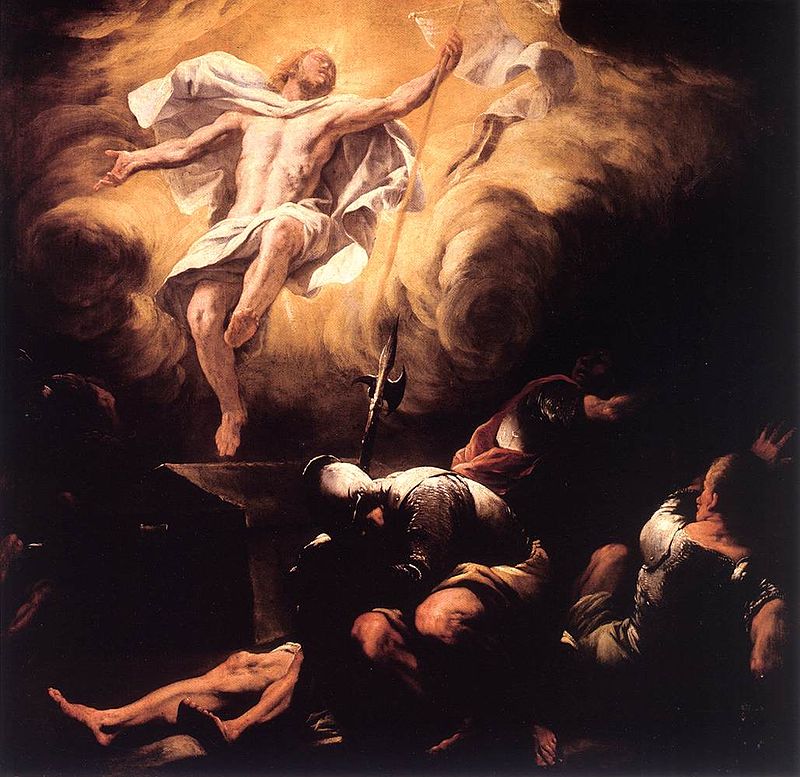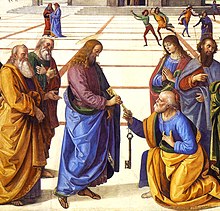(image courtesy David Cox)
By Spencer D Gear PhD
The term, ‘total depravity’, gets people squirming as they think of all people being put into this wicked, sinful, immoral and evil class. The language used, ‘total depravity’, is enough to scare people away from considering Christianity.
Most Christians I know wouldn’t use the term when sharing Christ with unbelievers. I don’t use it in evangelism but speak of ‘we are all sinners’ who have missed the mark of God’s standard. Most people can get a handle on that type of language.
Isn’t it over the top to think that non-Christians and people of other religions are totally bad? How is it possible to say that about Mother Theresa, Mahatma Gandhi, Corrie ten Boom, and those who work to relieve the poverty and deprivation of children through Compassion International?
What did it mean to Reformers such as Martin Luther, Jacob Arminius, and John Calvin?
1. Martin Luther on total depravity
In The Bondage of the Will (1976), he replied to the Desiderius Erasmus of Rotterdam (The Netherlands), The Freedom of the Will which Luther called the ‘Diatribe on Free-Will’ (1976:13).
1.1 Who was Erasmus?
Erasmus was a Dutch philosopher and Christian scholar (AD 1466-1536) who translated the New Testament into Greek. His publications included ‘the Novum Instrumentum consisting of the Greek text and Erasmus’ own Latin translation of the New Testament’.[1] ‘Textus Receptus was published by Desiderius Erasmus in his 1516 edition of the Greek New Testament: Novum Instrumentum omne’.
This is the New Testament base for the New Testaments by William Tyndale, the Bishops Bible, the Geneva Bible and the King James Bible. Although none of Erasmus’s manuscripts was older than the 10th century, it essentially agreed with the others. Erasmus made the Greek NT available to scholars across Western Europe.
It was a monumental feat and one for which the Dutch priest should be given much credit. While Erasmus Himself was not thinking in terms of Bible translations for the masses, the new Protestant movement certainly was, and this Greek text became a vital tool to that end (Wayne 2018).
1.2 Debate over Erasmus’s diatribe

(image courtesy Peace Apostolic Ministries)
Luther wrote insensitively to Erasmus:
For if man has lost his freedom, and is forced to serve sin, and cannot will good, what conclusion can more justly be drawn concerning him, than that he sins and wills evil necessarily?…
Responding to Erasmus, he said that throughout Erasmus’s treatment he forgot that “that ‘free-will’ can do nothing without grace, and you prove that ‘free-will’ can do all things without grace! Your inferences and analogies [fail]. “For if man has lost his freedom, and is forced to serve sin, and cannot will good, what conclusion can more justly be drawn concerning him, than that he sins and wills evil necessarily?” (1957:149)
Luther went on to drive home the point: “Let all the ‘free-will’ in the world do all it can with all its strength; it will never give rise to a single instance of ability to avoid being hardened if God does not give the Spirit, or of meriting mercy if it is left to its own strength” (1957:202).
It seemed that Luther caught out Erasmus when Luther said that he would not want ‘free will’ nor anything eels be left in his own hands to enable him after salvation.
This is ‘not merely because in face of so many dangers, and adversities and assaults of devils, I could not stand my ground; but because even were there no dangers, I should still be forced to labour with no guarantee of success’.
He stated ‘that God has taken my salvation out of the control of my own will, and put it under the control of His, and promised to save me, not according to my working or running, but according to His own grace and mercy, I have the comfortable certainty that He is faithful and will not lie to me, and that He is also great and powerful, so that no devils or opposition can break Him or pluck me from Him (1957:313-314).
Therefore, Luther confessed that total depravity meant there was no such thing as free-will and God had taken his salvation out of the control of his free will. Human beings cannot will to do good before God and are left in their sin – unless God intervenes.
This strict view of total depravity is similar to that of Calvin.
2. Calvinism and total depravity
The Calvinistic Synod of Dordt concluded concerning the corruption of human beings:
Therefore all men are conceived in sin, and by nature children of wrath, incapable of saving good, prone to evil, dead in sin, and in bondage thereto (The Canons of Dordt, Of the Corruption of Man, His Conversion to God, and the Manner Thereof, Article 3).
2.1 John Calvin’s view
John Calvin wrote that concisely in expressing his view:
… our nature is not only destitute of all good, but is so fertile in all evils that it cannot remain inactive. Those who have called it concupiscence have used an expression not improper, if it were only added, which is far from being conceded by most persons, that everything in man, the understanding and will, the soul and body, is polluted and engrossed by this concupiscence; or, to express it more briefly, that man is of himself nothing else but concupiscence. (Institutes of the Christian Religion, Vol. I, Bk. II, Chap. 1, Para. 8; J Allen transl.)
‘Concupiscence’ is an antiquated word that means ‘strong sexual desire; lust’ (lexico.com 2020. s.v. concupiscence) and ‘ardent, usually sensuous, longing’ (dictionary.com 2020. s.v. concupiscence’). It came into middle English via the old French and late Latin.
2.2 Summary of Reformation doctrine of total depravity
‘The Reformational doctrine of total depravity seen especially in Calvin can be stated summarily in these sentences:
1. Sin is the responsible choice of man to violate God’s law.
2. Sin is a depravity of the whole nature of man.
3. Sin conveys guilt before God for man’s personal and Adam’s representational sin.
4. Sin is the actively developed apostasy of man against God.
5. Sin is a full warrant for eternal punishment’ (Gregory n.d.).
3. Reformed Arminian: Total depravity
I accept a traditional Reformed Arminian approach to total depravity. Reformed Arminian is the theology of Jacob Arminius. It is not that of Wesleyan Arminianism or Semi-Pelagian Arminianism.
This means that because of the Fall into sin, no human beings are able to save themselves. Sinners are ‘dead in sin’.[2]
My understanding of total depravity or total inability is parallel with that of Jacob Arminius. Before the Fall into sin, human beings were ‘good’ in their ability to love and do the works of God.
Before the Fall, human beings were created in the image of God (Gen 1:26-27). According to Gen 2:17, before the Fall human beings hd the ability to choose good from evil. After the Fall, for believers, they have ‘put on the new self, which is being renewed in knowledge in the image of its Creator (Col 3:10 NIV).
3.1 Dead in sins
Ephesians 2:1-2 (NIV) are critical verses in understanding Total Depravity:
‘As for you, you were dead in your transgressions and sins, in which you used to live when you followed the ways of this world and of the ruler of the kingdom of the air, the spirit who is now at work in those who are disobedient’.
What does it mean to be ‘dead in sins’?
They were spiritually dead in their former lives and this was their lifestyle (present participle – continual action). We note in Eph 1:7 the plurals, ‘In him we have redemption through his blood, the forgiveness of sins, in accordance with the riches of God’s grace’ (NIV). Every trespass/sin (missing the mark) demonstrated this deadness.
?Does it mean that unbelievers cannot respond to God’s offer of salvation? We know this is not the case because of the content of Titus 2:11 (NIV). Do sinners have a total inability to respond to the offer of salvation without God’s unconditional election and irresistible grace?? See my article: How to interpret ‘appeared’ in Titus 2:11
?We know that Adam ad Eve, after they had sinned, could still hear the voice of God (Gen 3:8-19 NIV). Therefore, Total Depravity does not cut one off from hearing the voice of God. It is a demonstration of what has happened within human beings.?
3.2 The crunch time
The crunch is this, described as total depravity, and it is that sinful human beings cannot do what is good towards God. That’s because the free will has not only been ‘wounded, maimed, made infirm, bent, and weakened’ but also it is ‘imprisoned, destroyed, and lost’.
Its powers are not only debilitated and useless unless they be assisted by grace, but it has no powers whatever except such as are excited by Divine grace’. For Christ has said, “Without me you can do nothing.”?
St. Augustine, after having diligently meditated upon each word in this passage, speaks thus: “Christ does not say, without me ye can do but Little; neither does He say, without me ye can do any Arduous Thing, nor without me ye can do it with difficulty. But he says, without me ye can do Nothing! Nor does he say, without me ye cannot complete any thing; but without me ye can do Nothing.” That this may be made more manifestly to appear, we will separately consider the mind, the affections or will, and the capability, as contra-distinguished from them, as well as the life itself of an unregenerate man’ (Arminius 1977:525-526).?
But the great and good news is that God has provided a way to deal with this ‘dead in sin’ situation: ‘For the grace of God has appeared that offers salvation to all people’ (Titus 2:11 NIV). This is the enabling grace of God available ‘to all people’ for the offering of salvation.
I believe in Total Depravity because it is a Bible teaching. It refers to comprehensive inability to do God’s good because of sins and transgressions.
3.3 Let’s explain this further
The Reformed Arminian perspective is that human beings in the beginning were created in the image of God. Adam & Eve fell from this sinless state through willful disobedience, leaving the whole human race in a state of total depravity.[3]
This means they were sinful, separated from God and sentenced to God’s condemnation (Rom 3:23; Eph 2:1-3). Total depravity does not mean that human beings are as bad as bad could be. But it means every part of a human being – body, soul/spirit, heart, and mind – has been infected with sin.
All human beings have a sinful nature with a natural desire/inclination to sin. So, all human beings are fundamentally corrupt throughout their entire beings (Jer 17:9; Gen 6:5; Matt 19:17; Luke 11:13).
All people are spiritually dead in their sins (Eph 2:1-3; Col 2:13) and as a result are slaves to sin (Rom 6:17-20). Could anything be clearer than the Apostle Paul’s statement, ‘For I know that good itself does not dwell in me, that is, in my sinful nature [flesh]. For I have the desire to do what is good, but I cannot carry it out’ (Rom 7:13 NIV).
Paul further explains the nature of total depravity: “As it is written: ‘None is righteous, no, not one; no one understands; no one seeks for God. All have turned aside; together they have become worthless; no one does good, not even one’” (Rom 3:10-12; cf. Rom 1:18-32; Eph 4:17-22).
So in their natural states, people are hostile to God and they cannot submit to his Law or please him – they are totally depraved (Rom 8:7-8).
4. What it looks like in the community
As I prepared this article today, I came across this headline from yesterday’s, The Sydney Morning Herald:
‘All over the world, patients are lying about virus: GP’
This was a headline in an Australian newspaper (online)
(image courtesy Centers for Disease Control and Prevention)[4]
Journalist Madonna King explained:
But for each good act, we’ve also seen how the fear of this disease, which is only beginning, can bring out the worst of human behaviour.
Today, that behaviour is being seen in our GP surgeries, where staff are being abused, ridiculed and told lies.
It’s that latter behaviour – where patients are lying to receptions and nurses, denying they have travelled overseas or have had contact with other COVID-19 cases, in order to see a doctor – that is particularly worrying….
Dr Glynn Kelly: ‘”They are lying. And it’s happening all over Australia,’’ he says. Some patients were filling out COVID-19 forms denying overseas travel or contact with other infected people, so they could get into see a doctor – and then would confess (King 2020).
We may well conclude that this lying is a manifestation of the environment since we are experiencing a pandemic of Coronavirus. We are tempted to place the blame on the environment from childhood to adulthood, i.e. it’s learned behaviour.
This is why we need God’s word on total depravity. Jeremiah 17:9 is but one example of the core problem: ‘The human heart is the most deceitful of all things, and desperately wicked. Who really knows how bad it is? (NLT)
Doctors are finding out how depraved a person’s inner being is – in their consulting rooms.
5. A biblical perspective
The sinfulness of all human beings, as a result of the guilt inflicted on us by Adam’s first sin is that righteousness cannot be found in us (Rom 3:10; Col 3:10; Eph 4:24).
Instead, the whole of human nature is corrupted (i.e. total depravity or original sin). See: Ps 51:5; John 3:6; Rom 3:18; 8:7-8, and Eph. 2:3.
Although the context deals with the prediction of Noah’s world-wide flood, Gen 6:5 (NET) summarises well the human condition: ‘But the LORD saw that the wickedness of humankind had become great on the earth. Every inclination of the thoughts of their minds was only evil all the time’.
 A Sistine Chapel fresco depicts the expulsion of Adam and Eve from the garden of Eden for their sin of eating from the fruit of the Tree of the knowledge of good and evil (Image courtesy Wikipedia).
A Sistine Chapel fresco depicts the expulsion of Adam and Eve from the garden of Eden for their sin of eating from the fruit of the Tree of the knowledge of good and evil (Image courtesy Wikipedia).
Sadly, that is the condition of all people without Christ.
After the Flood, the Lord still described human beings this way: ‘The inclination of their minds is evil from childhood’ (Gen 8:21 NET).
Could Isaiah be clearer? ‘All of us have become like something unclean, and all our righteous acts are like a polluted garment; all of us wither like a leaf,
and our iniquities carry us away like the wind’ (Isa 64:6 HCSB).
‘It might be more accurate to say that we are totally unable to be righteous’ (Stack Exchange 2015).
The New Testament view is that all human beings are in a fallen state and are dead in sin (Eph 2:1-2). We are slaves to sin (John 8:34) and all unbelievers are ‘darkened in their understanding, excluded from the life of God, because of the ignorance that is in them and because of the hardness of their hearts’ (Eph 4:18 HCSB).
6. Conclusion
Human beings are wretches before God. ‘We can’t think, will, nor do anything good in and of [ourselves].[5] We are unable do anything that merits favor from God and we cannot do anything to save ourselves from the judgment and condemnation of God that we deserve for our sin’.
We cannot even believe the gospel on our own (John 6:44). If anyone is to be saved, God must take the initiative’ (see F.A.C.T.S. of Salvation: T).
All human nature is corrupt – total inability to respond to God unless he draws us to Himself.
7. Works consulted
Gregory, T M n.d. Presbyterian doctrine of total depravity (online). Available at: https://www.the-highway.com/depravity_Gregory.html (Accessed 20 March 2020).
King, M 2020. The Sydney Morning Herald (online). All over the world, patients are lying about virus: GP, 19 March. Available at: https://www.smh.com.au/national/queensland/all-over-the-world-patients-are-lying-about-virus-gp-20200319-p54bob.html (Accessed 20 March 2020).
Luther, M 1957. The Bondage of the Will, J I Packer & O R Johnston (eds). Old Tappan NJ: Revell.
Stack Exchange 2015. What is the biblical basis for total depravity? (online), 24 February. Available at: https://christianity.stackexchange.com/questions/27/what-is-the-biblical-basis-for-total-depravity (Accessed 17 March 2020).
Wayne, L 2018. CARM (online). What is the Textus Receptus? Available at: https://carm.org/KJVO/what-is-the-tr (Accessed 19 March 2020).
8. Notes
[1] Internet Encyclopedia of Philosophy n.d. Desiderius Erasmus (1468?—1536). Available at: https://www.iep.utm.edu/erasmus/ (Accessed 19 March 2020).
[2] This was my post to Christianforums.net 2020. T.U.L.I.P., OzSpen#16. Available at: https://christianforums.net/Fellowship/index.php?threads/t-u-l-i-p.81940/#post-1551578 (Accessed 16 March 2020).
[3] Ibid., OzSpen#31.
[4] Available at: https://phil.cdc.gov/Details.aspx?pid=23313 (Accessed 20 March 2020).
[5] The original said, ‘themselves’.
Copyright © 2020 Spencer D. Gear. This document last updated at Date: 20 March 2020.

































